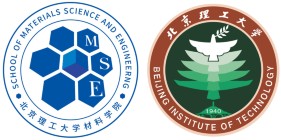High-entropy alloys (HEAs) are promising candidates for many new applications, given their superior mechanical properties. However, many high strength HEAs are too brittle. To expand their use, a new strategy to design ultra-strong and ductile HEAs is needed.
A new HEA design is an example of the many breakthroughs by researchers at the School of Material Science and Engineering (SMSE), Beijing Institute of Technology (BIT). With an 80-year tradition in material science research and education, BIT established its SMSE in 2002. The school has expanded and enriched its research on high-energy and density materials, flame retardant functional polymers.
“We focus on design concepts, preparation methods, and new techniques for material engineering by studying the thermal, mechanical, optical, electronic and magnetic properties of new materials,” said Pang Siping, SMSE’s dean. “We aim for disruptive technologies that address new material needs in emerging industries, and national defence.”
A new design proposed by Wang Fuchi has led to thedevelopment of ultra-strong and ductile HEAs. Credit: Beijing Institute of Technology
Innovation-driven breakthroughs in materials
Committed to developing ultra-strong and ductile HEAs, Wang Fuchi heads the Laboratory of Science and Technology on Materials for Environment Impact at BIT. He and his collaborators designed a nanostructure with a new mechanism to enhance alloy strength while maintaining ductility. With multiple elements, the alloy is also more resistant to corrosion and oxidation, making it ideal for protective coatings.
“HEAs have drawn lots of attention globally these days,” said Wang. “But limits on strength have restricted their industrial applications.” The key to Wang’s design is forming a high-entropy solid-solution matrix after separating out enough strengthening phases. “We find that the spinodal order–disorder nanostructure contributes to the strength increase,” said Wang. “The future trend will move from high-entropy alloys to high-entropy phases.”
BIT’s SMSE researchers also spearhead technologies for lightweight non-crystalline composites, and metal-ceramic composite materials with improved load-bearing and protective capacities. A team led by renowned metal material expert, Cai Hongnian, a member of the Chinese Academy of Engineering (CAE), is exploring material genome engineering technologies, integrating structural, functional, and energetic materials. “High-throughput design, preparation and measurement, combined with metallic/non-metallic lightweight material engineering are essential for the integration of structures and functions,” said Cai. “We are also building national data centres for new materials to serve domestic and international peers.”
Zhang Jiatao’s technology has enabled 3D printing of dopedquantum dots in silica gel, in both big and small structures. Credit: Beijing Institute of Technology
BIT has also developed many other novel energetic materials, such as explosives that can withstand stimuli for increased safety, and recoverable and reusable solid propellants.
“Our research not only works for military and civilian applications, but also strengthens our understanding of the relationships between energy, stability and material structures,” said Pang.
To strengthen international mainstream research and discipline development, BIT SMSE’s energy material research focuses on exploring interface chemistry for developing new energy electronic technologies. “Precise synthesis of micro-nanostructures and large-scale assembly are the key for developing efficient devices using nano energy materials,” said Zhang Jiatao, a professor from BIT. He led a team that proposed a novel semiconductor nanocrystal engineering strategy that uses atomic-level cation exchange to achieve precise doping of nanocrystals and hetero-interface to metals. The approach has radically improved the efficiency of plasmonic hot electron injection into the semiconductor shell, with a quantum yield of 48%. Zhang’s team has also revealed the mechanism underpinning electronic doping of semiconductor nanostructures, shedding light on developing optically switchable magnetic nanomaterials. Their studies were commended by international peers, including Victor Klimov, director of the Center for Advanced Solar Photophysics at Los Alamos National Laboratory (LANL), and Xia Younan, a nano expert from Georgia Institute of Technology.
“Precise doping and synthesizing approaches involving surface chemistry will promote technology upgrades for nanomaterials,” said Zhang. “The upgrade will also lead to development of optoelectronic materials, information, and electronic technologies.” Zhang also expects to integrate 3D printing and super-material technologies to develop novel materials with new properties.
An integral component of energy material research also includes rechargeable batteries. Wu Feng, BIT professor and a CAE member, and colleague Chen Renjie, proposed using light-element, multi-electron, and multi-ion reaction systems to improve energy density of batteries. “Based on this approach, we can coordinate different variables and expand the horizon for battery material research,” said Wu. “Our goal is to achieve a leap in energy density for batteries and in the ranges of electric vehicles.” Wu has won many national and international awards for his work on battery technologies, including International Battery Association (IBA)’s IBA Research Award.
Another strength of BIT is its research on flame-retardant materials that could be used for anti-terrorism measures and social security needs. The focus is on developing green flame retardants without halogen, a group of chemical elements with adverse health and environmental effects. “Clean technology, function coupling, and industrial application are what we are after for flame-retarded materials,” said Yang Rongjie, director of the National Laboratory of Flame-Retardant Materials at BIT. His team was the first to use ammonium polyphosphates as high-efficiency flame retardants and manufacture them. Yang expects to expand the interdisciplinary exploration of these materials. “We need nanotechnology to achieve other preferred properties in addition to flame retardancy,” said Yang. “It is also important to integrate polymer chemistry with fire safety evaluation studies.”
Credit: Beijing Institute of Technology
Emphasizing an integration of natural science and engineering, BIT’s SMSE has established interdisciplinary research platforms, including seven national laboratories and six provincial or ministerial laboratories or centres.
These advanced platforms contain half a billion RMB worth of equipment, providing solid support to graduate students training. Many BIT graduates have become leading scientists or professionals in aerospace, aviation, shipping, nuclear and national defence industries.


